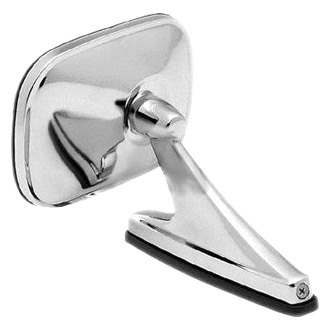But that wouldn't be any fun.
- Login or Register
No account yet? Sign up
I am 100% bamboozled.Ferrari has opened a can of worms by becoming the first team to move its rear-view mirror mountings from the chassis to the halo.
Clearly, its objective was to get a higher-mounted turning vane to help pull more mass airflow down into the top opening of the sidepods.
This upper turning vane is quite a distance from that opening, but getting the flow to turn in that direction means that the low pressure behind the internal radiator will pull airflow into the inlet duct, and hence through the radiator.
That "turn air into the radiator" theory was bad at the start of the season with the hollow mirror, but acceptable. Now they're saying that a flap half a meter above the inlet will turn air into the radiator? WTF?Vanja #66 wrote: ↑14 May 2018, 22:01https://www.motorsport.com/f1/news/why- ... 37543/?s=1
Mr Gary A:
I am 100% bamboozled.Ferrari has opened a can of worms by becoming the first team to move its rear-view mirror mountings from the chassis to the halo.
Clearly, its objective was to get a higher-mounted turning vane to help pull more mass airflow down into the top opening of the sidepods.
This upper turning vane is quite a distance from that opening, but getting the flow to turn in that direction means that the low pressure behind the internal radiator will pull airflow into the inlet duct, and hence through the radiator.

There is a downward facing surface, but it doesn't point even remotely at the air inlet. If you had taken the time at the CFD studies that were shown at this very forum you'd have seen that the turbulence it creates will actually flow over the sidepod, and will make roughly the same function of the vortex generators that other teams put behind their air intakes.roon wrote: ↑15 May 2018, 00:09Think of it like a stacked wing--biplane, triplane setup. As in aircraft. The air deflected by the mirror and winglet will not directly flow into the radiator. But it will influence the volume of air beneath those components; that volume of air which does flow into the radiator. This is what I argued earlier in the thread.
roon wrote: ↑26 Feb 2018, 00:16...consider that the lift-producing profile of the mirror will direct air downward. This will also influence the flow field around it. The air passing through the mirror may not make it to the radiator inlet, but the air beneath it may.
https://i.imgur.com/XppVpsa.jpg
dankane24 wrote: ↑24 Feb 2018, 16:11If the mirrors aren't being used to direct airflow into the top sidepod intake than can someone explain why they would have a downward swooping trailing edge to them?
http://i.imgur.com/O2atIaZ.jpg
I'm really not sure what's your point here. But the regulations clearly state that there's a 20mm space around the halo to fit aerodynamic devices to reduce its negative effects in aerodynamics.roon wrote: ↑15 May 2018, 00:53The aero cone ahead of all the the mirrors used in F1 in recent decades, is not integral to the function of the mirror. It is redundant bodywork which exists only for aero benefit, and should therefore be banned. F1 mirrors should henceforth resemble the following.
https://encrypted-tbn0.gstatic.com/imag ... OqNYe0bBnS
https://www.carid.com/ic/k-source/side- ... 1401_6.jpg

Can't put it past the team sabotaging the structural integrity of the mirror housing to prove their point.graham.reeds wrote: ↑15 May 2018, 08:07It's easy to test. Charlie tells Ferrari to remove the black "support" and then do 10 laps at race speeds. If it breaks then they can keep it. If it doesn't break then it is banned because it is not a support but an aero aid.